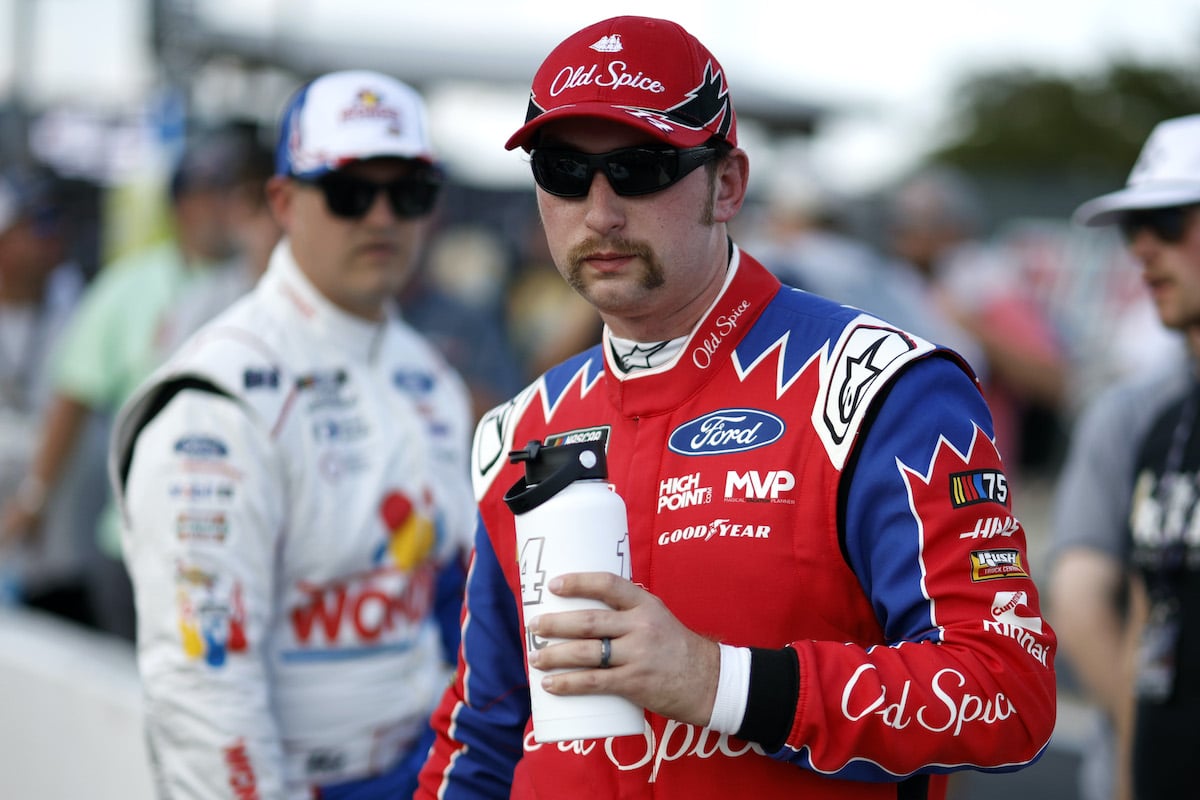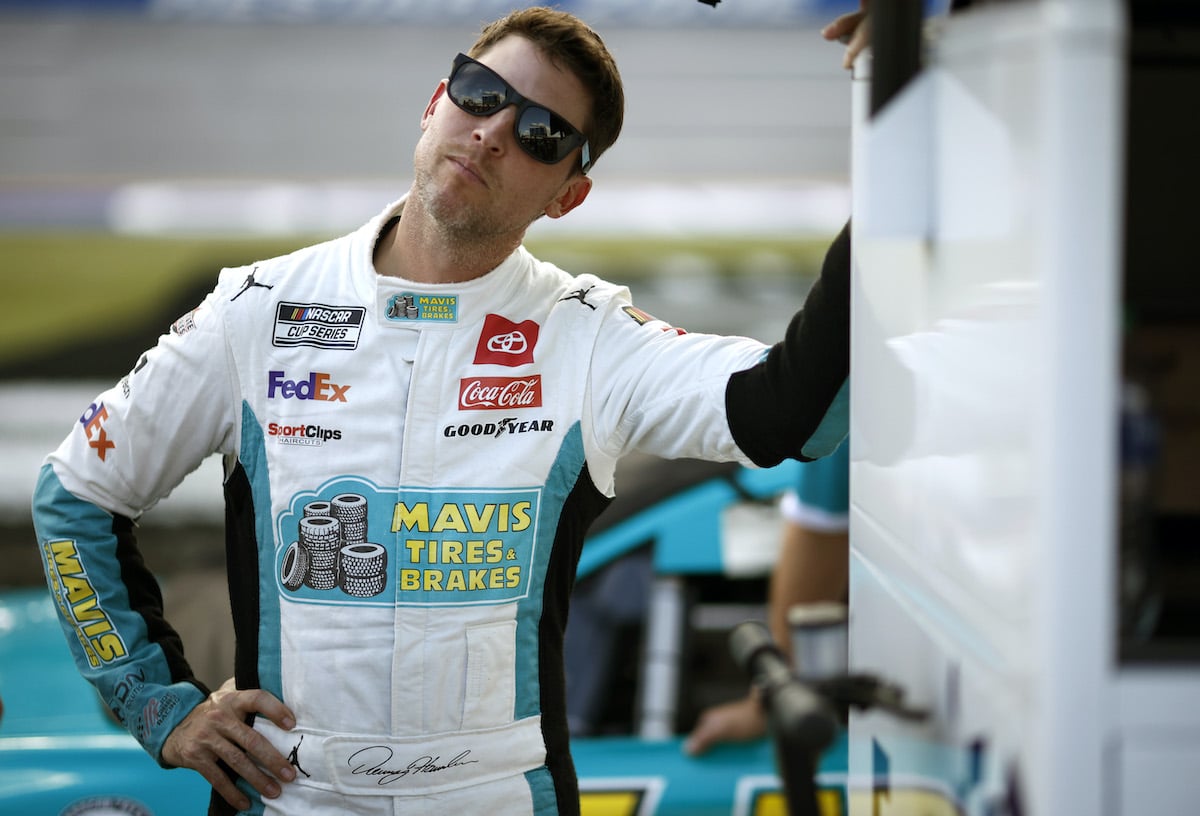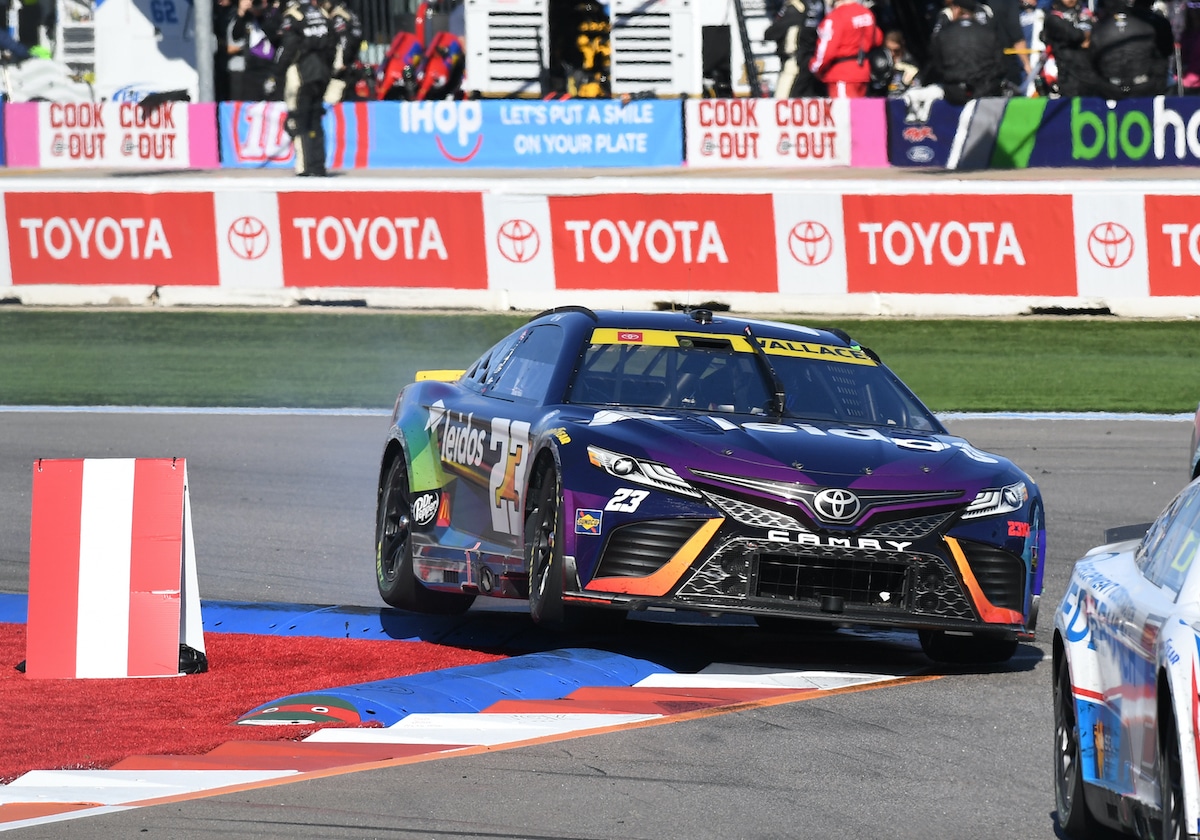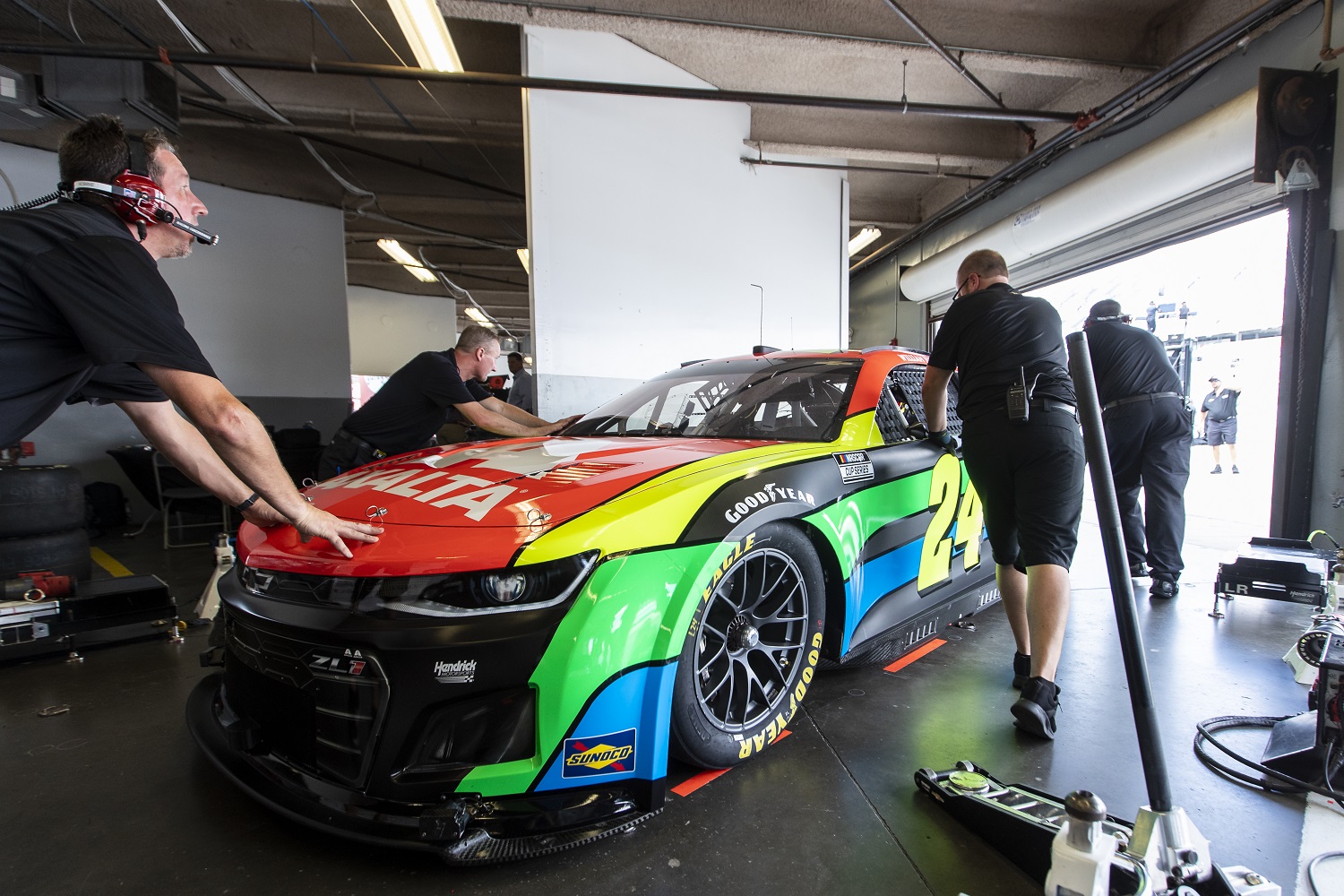
NASCAR Braces for Next Gen Problems: ‘The Reality Is We’re Going To Be Working on This Airplane While We’re Flying It’
Don’t expect to go onto eBay this winter to score a sweet deal on Kyle Larson’s No. 5 Chevy or Bubba Wallace’s No. 23 Toyota. History suggests those drivers and their teams are going to need all their current hardware for the start of the 2022 NASCAR Cup Series despite the anticipated rollout of the Next Gen car.
The Next Gen is the seventh generation of standardized cars for the sport’s top-tier series, replacing designs that took to the ovals and road courses in 2013. Ford, Chevy, and Toyota are working with new specifications to improve the aerodynamics and downforce. One of the broader goals is to lower costs, potentially luring other automakers into NASCAR.
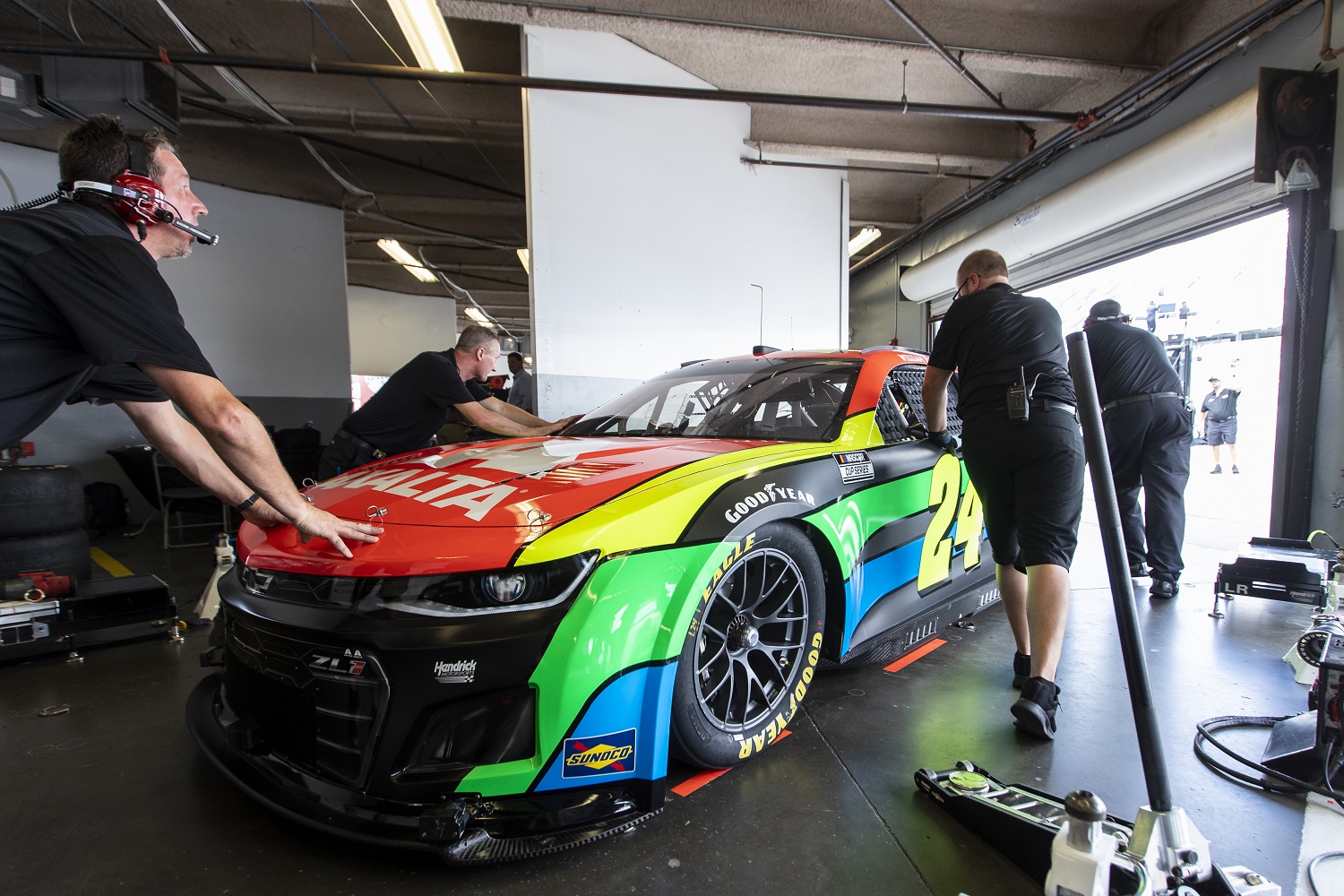
Even if the operational costs do come down over the long term, the teams face a significant price tag for replacing the current cars. If the rollout schedule holds true, the Next Gen car will make its competition debut on Feb. 6, 2022. At least two-thirds of the teams will participate in the Clash, the annual exhibition preceding the Daytona 500, the first points race of the season.
The Clash is moving to the Los Angeles Coliseum, which will install a quarter-mile asphalt track. The move out of the traditional Daytona venue was only recently announced, and there is already conjecture that NASCAR will relent and use the current cars instead in the unfamiliar environment. There would certainly be precedent.
In 2007, NASCAR rolled out the Car of Tomorrow (CoT), a significant overhaul of the existing model with a focus on safety following Dale Earnhardt’s death at the 2001 Daytona 500. However, the CoT was not ready in time for Daytona. It made its debut more than a month into the season at Bristol, where Kyle Busch won in overtime over Jeff Burton and Jeff Gordon.
In fact, teams competed in the CoT just 16 times that first season as engineers tweaked the features and addressed driver concerns about handling. The CoT became the full-time model in 2008, which was actually a year ahead of the original schedule. The development of the Next Gen car comes in a shorter timeframe, and the pandemic brought work to a halt for a time last spring. That ended whatever chance NASCAR had of unveiling it for competition in 2021.
NASCAR closed the development phase on Feb. 1, 2021, and the three manufacturers delivered prototypes in the spring. Still, there has only been one large-scale test, featuring eight teams at Daytona in early September. But that was primarily to assess tire standards.
Everyone in the industry will be watching the next three major tests, beginning at Charlotte, on both the oval and the road course, in early October. The greatest fear is that NASCAR brings 15 cars together and discovers that the aero package doesn’t work in a pack as expected.
David Wilson, president of Toyota Racing, offered an update during the Las Vegas playoff weekend. Motorsport reported that the scale of the project has been imposing.
“This isn’t just an evolution – we’re taking the seat out of the current car and throwing the rest away and we can’t minimize that. The reality is we’re going to be working on this airplane while we’re flying it. We’re going to be working on this car while we’re racing it next year. That’s to be expected. No one should be surprised. That’s just what we’re dealing with.”
David Wilson
Among the concerns that Wilson cited was a delay in the delivery of parts by vendors that NASCAR has selected.
“We’re all behind and that’s just a fact,” Wilson said, adding that he never expected to feel “comfortable” at this stage anyway, so he’s not issuing some dire warning.
Still, NASCAR has a lot invested in the Next Gen car. Starting the season without it would be embarrassing. But rolling out a car that performs poorly in the Daytona 500, the one annual race that attracts large numbers of first-time viewers, would be worse.
At the moment, sticking with the old car rather than rushing the testing timeline should remain a plausible option. NASCAR certainly isn’t going to delay the start of the season just to wait on the Next Gen car.
“Good, bad or otherwise we don’t have a ‘Plan B,’ and as an industry our heads are down and we got to get this car ready to race,” Wilson said. “We need to make sure the cars are safe. We need to make sure the cars race well.”
If that means keeping the current cars for a few months into 2022, then that’s the wise move.
Like Sportscasting on Facebook. Follow us on Twitter @sportscasting19.
